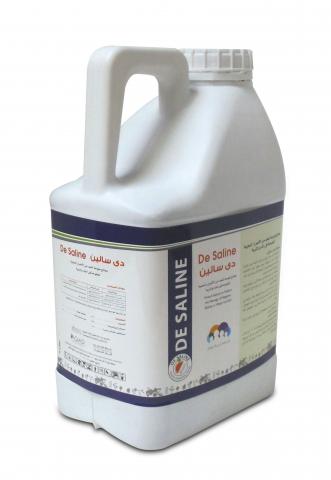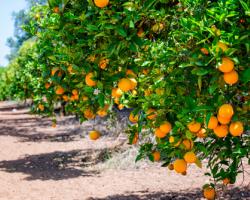
It is an advanced technology for salinity treatment to reduce its negative effects on the soil
| Components | Rate |
|---|---|
| Calcium (Ca) | 15% |
| Carboxylic Acids | 18% |
| Amino Acids | 5% |
Benefits of De Saline :
- It helps to deform the ionic bond and simplifying all elements for plants.
- It increases the plant's ability to withstand salt stress and dehydration as it contains calcium and short-chain carboxylic acids that reduce the risks of salinity.
- De-saline is effective in saline soils with all kinds of crops, fruits, and vegetables.
- It increases the ability of the soil to retain water, especially in the sand, and increases the plant's ability to absorb nutrients from the soil, which increases crops' quantity and quality.
- It improves the root respiration.
- It increases the vitality of the roots and improves their growth.
- It reduces the percentage of exchanged sodium in the soil.
- It Prevents sedimentation in the irrigation systems.
- It increases the soil stable aggregates and improves them.
- It reduces the salinity of irrigation water and prevents sedimentation around the roots.
- It prevents sedimentation of elements in the irrigation system, which prevents clogging.
- It reduces the soil's PH.
Usage Rates:
- It shall be used in low doses every week, depending on the salinity of soil and water.
- It can be used with all kinds of crops with an average of 2.5 - 5 liters/acre depending on the salinity of soil with repetition once every two weeks in general, or as follows:
Salinity ratio | Application rate | Method |
Less than 6 (3840 ppm): | 2-3 liters/acre every two weeks | In the last quarter of an hour of irrigation |
Low doses are to be at the beginning of plant life. Large doses are to be at the beginning of growth cycles, blossoming, and appearance of fruit nodes. | ||
From 6 - 9 (3840 - 5760 ppm): | 3-5 liters/acre every two weeks |
|
Above 9 (5760 - 12000 ppm): | 5-7 liters/acre every two weeks
|
|
Available In 5 Liter & 25 Liter


